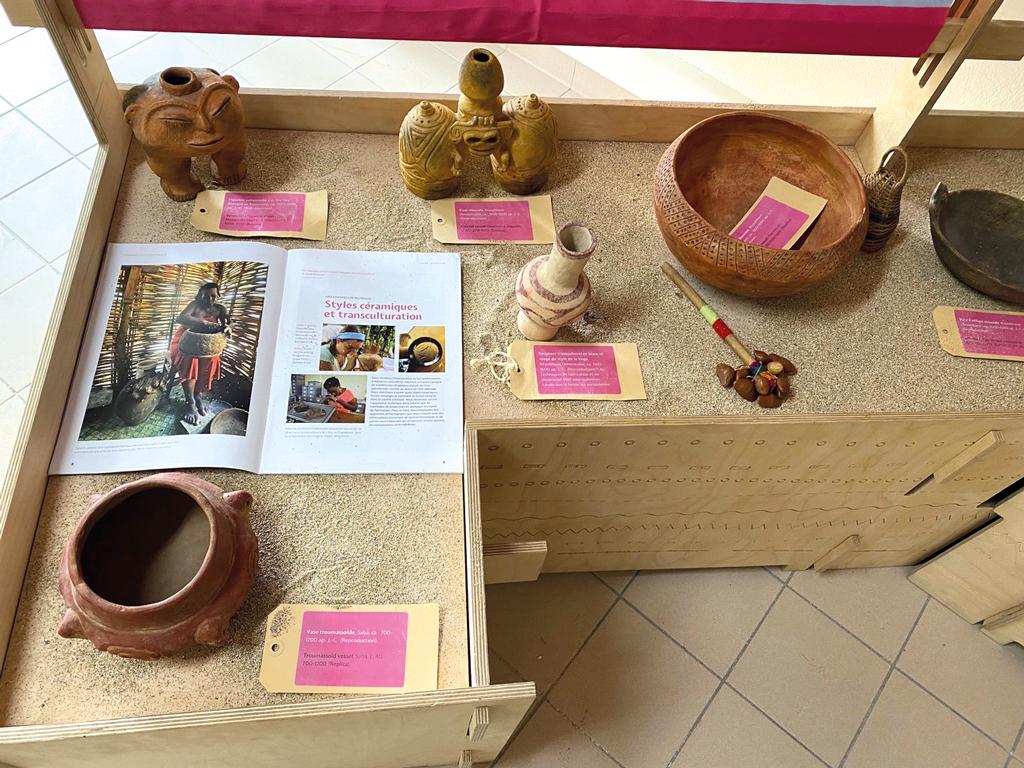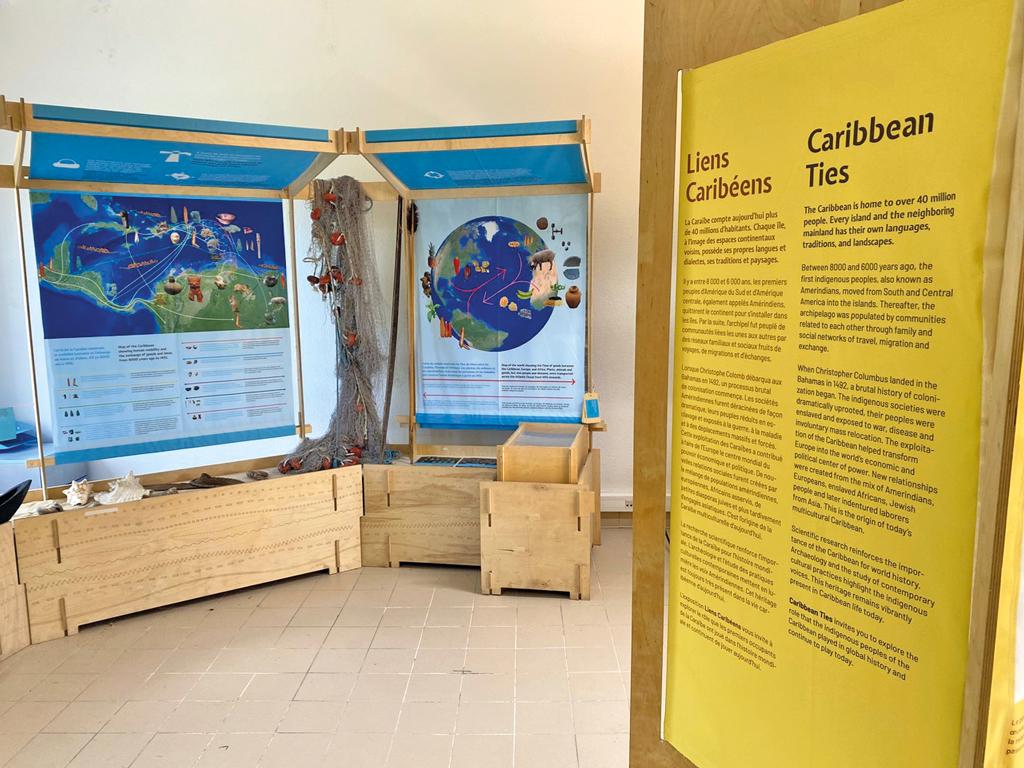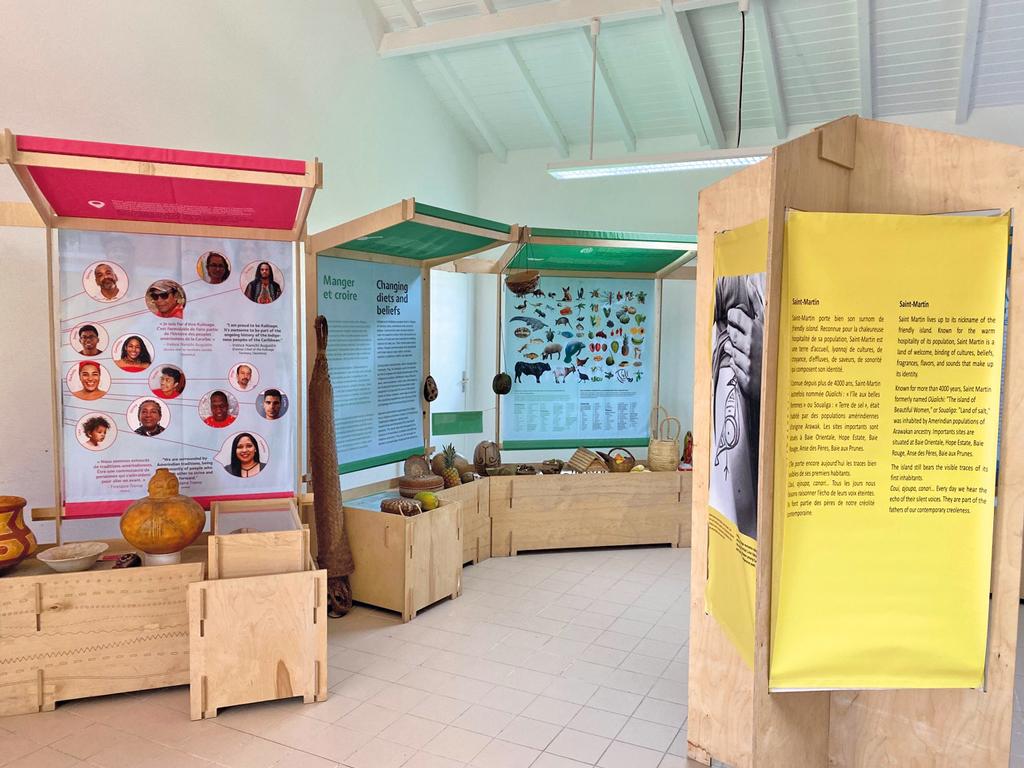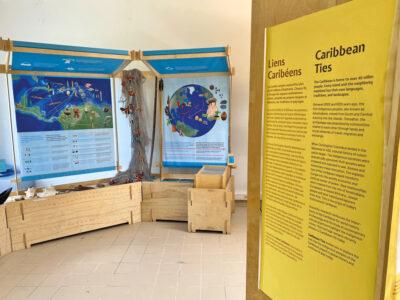 Hosted in the premises of the Local Mission of Saint Martin until May 13, this international exhibition on the connected peoples of yesterday and today was inaugurated on April 21 in the presence of the organizers, several officials and of the local press.
Hosted in the premises of the Local Mission of Saint Martin until May 13, this international exhibition on the connected peoples of yesterday and today was inaugurated on April 21 in the presence of the organizers, several officials and of the local press.
The opening began with several speeches with Thomas Sainte-Luce, president of the Pewen group, as an introduction. Followed by Katarina Jacobson, archaeologist and head of the Collections Department of the Edgar Clerc Departmental Museum, who told the genesis of the NEXUS1492 project funded by the European Research Council, the exhibition of which presents the most recent research. And finally, Irvince Auguiste, former Kalinago chief (Dominica), who, sometimes with emotion, sometimes with humour, told the assembly the history of the indigenous peoples, their strength and their resilience in the face of colonization and the many disadvantages they are still often victims.
The assistance was made up of about thirty people including Senator Annick Petrus in her capacity as President of the Local Mission, Nathalie Marrien from the Solidarity and Family Delegation to the Community, Alex Richards, Director of Cultural Action and Corinne Hofman, professor of Caribbean archeology at the University of Leiden (Netherlands) without whom “Caribbean Ties/Links” would not exist. Before inviting the guests to discover the exhibition located upstairs, Katarina Jacobson contextualized the work presented, the fruit of multiple research carried out using cutting-edge scientific methods and techniques in archaeology, isotopic geochemistry, genetics, physical anthropology, heritage studies, etc.
Archeology and the study of contemporary cultural practices shed light on Native American voices. 
Before the colonization of the Bahamas by Christopher Columbus in 1492, Native American peoples were present throughout the archipelago. Irvince Auguiste described the dramatic consequences of the colonial process on the indigenous population: “it was colonization that separated the Amerindian peoples”.
The Lesser Antilles served as a base for the anti-colonial resistance of Native American populations. The mountains of Dominica provided hiding places for this people who fell victim to the brutal early settlers. Today, the largest surviving Native American population of the insular Caribbean, the Kalinagos, live in Dominica. The exhibition “Caribbean Ties / Liens Caribéens” which participates fully in the recognition of the existence and presence of these peoples in the Caribbean, is organized according to four themes: multicultural landscapes; travels, migrations, exchanges; eat and believe; and finally, the future of the past. To be discovered at the Local Mission of Saint Martin, at the former Evelyna Halley school, behind the Marigot bus station. _VX
6,497 total views



















No comments